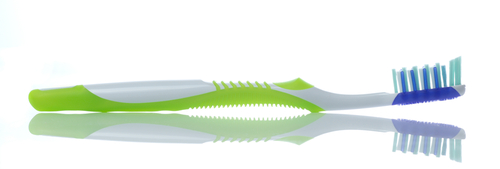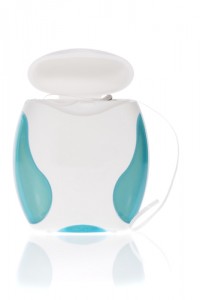Brushing
Always use a soft toothbrush. We recommend brushing for about two minutes. While brushing the outside surfaces of your teeth, position the brush at a 45-degree angle where your gums and teeth meet. Gently brush in a circular motion using small, gentle strokes. Use light pressure while putting the bristles between the teeth, but not so much prsessure that you feel any discomfort. Brush towards the biting surface to sweep off the plaque.

When you are done cleaning the outside surfaces of all your teeth, follow the same directions while cleaning the back teeth facing your tongue. These areas are often missed, so don’t forget them. To clean the inside surfaces of the upper and lower front teeth, hold the brush vertically. Make several gentle back-and-forth strokes over each tooth. Massage the surrounding gum tissue with your toothbrush.
Next you will clean the biting surfaces of your teeth by using short, gentle strokes. Change the position of the brush as often as necessary to reach and clean all surfaces. Try to watch yourself in the mirror to make sure you clean each surface. After you are done, rinse vigorously to remove any plaque you might have loosened while brushing.
If you have any pain or bleeding while brushing, or have any questions about how to brush properly, please call the office at 480.820.7777.
Flossing
Periodontal disease usually appears between the teeth where your toothbrush cannot reach. Flossing is a very effective way to remove plaque from those surfaces. However, it is important to develop the proper technique. The following instructions will help you, but remember it takes time and practice.
 Start with a piece of floss (waxed is easier) about 18″ long. Lightly wrap most of the floss around the middle finger of one hand. Wrap the rest of the floss around the middle finger of the other hand.
Start with a piece of floss (waxed is easier) about 18″ long. Lightly wrap most of the floss around the middle finger of one hand. Wrap the rest of the floss around the middle finger of the other hand.
Using your thumb and forefinger, gently slide the floss between your teeth. Do not force the floss or try to snap it in to place. This will hurt the gum Bring the floss to the gum line then curve it into a C-shape against one tooth. Slide it into the space between the gum and the tooth until you feel light resistance. Move the floss up and down in a scraping motion on the side of one tooth. Remember there are two tooth surfaces that need to be cleaned in each space. Continue between each tooth. Be careful not to cut the gum tissue between the teeth. As the floss becomes soiled, turn from one finger to the other to get a fresh section.
When you are done, rinse vigorously with water to remove plaque and food particles. Do not be alarmed if during the first week of flossing your gums bleed or are a little sore. If your gums hurt while flossing you could be doing it too hard or pinching the gum. As you floss daily and remove the plaque your gums will heal and the bleeding should stop.
